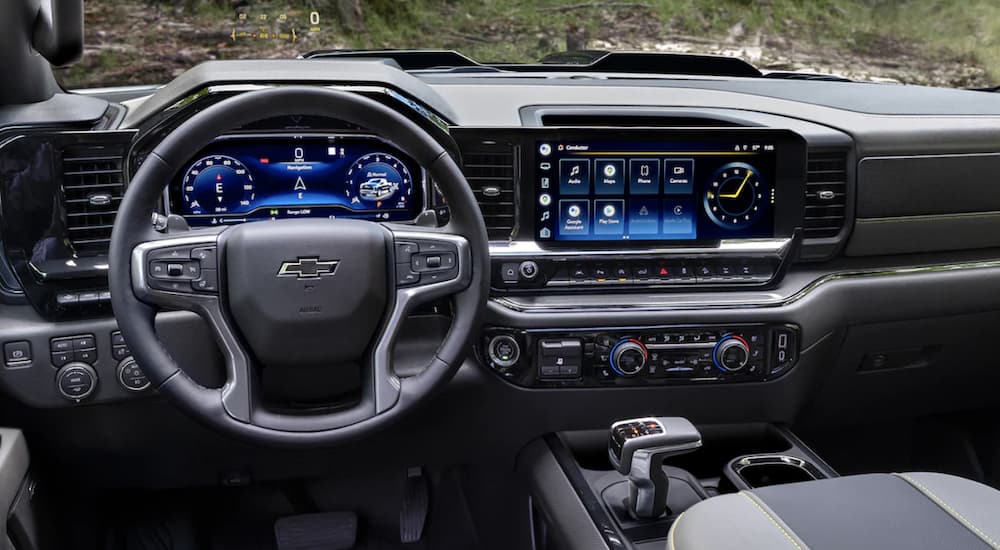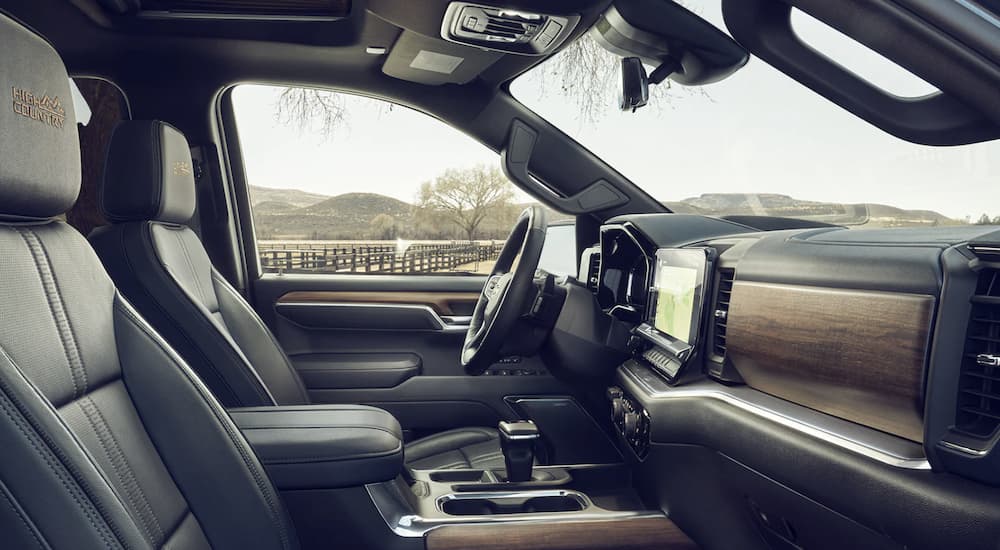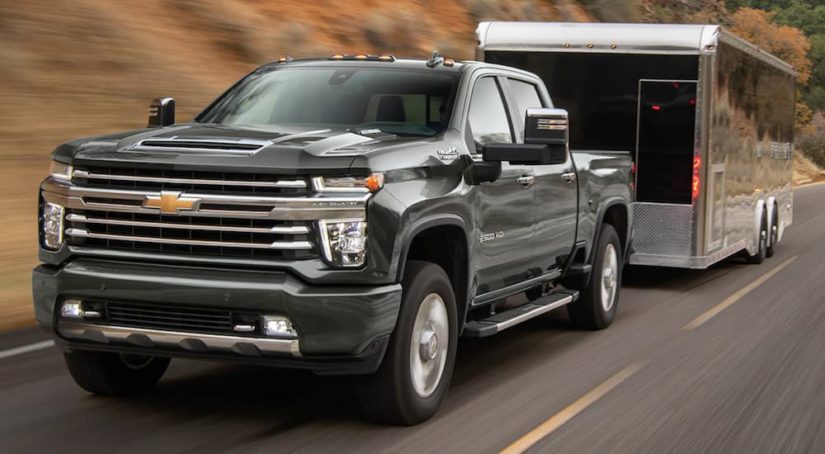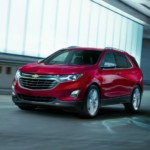Technology has come a long way since the first automobile was invented. Advanced safety features and convenience apps have made driving cars and trucks easier than ever before. Some of these advancements are so cool they almost seem to work like magic. When this is the case, it’s nice to know a bit more about the tech to see if it’s worth all the hype. Although the folks at your local used Chevy dealer can show you all of the features when you go in for a test drive, learning for yourself before you go can give you additional confidence.
One of the features we find most useful in Chevy’s arsenal is the Transparent Trailer camera view. If you tend to tow frequently or would just like some extra reassurance when you do, the Transparent Trailer View may be exactly what you’re looking for. There are several other camera views that you can get with the Silverado, but this one is the most innovative of the lot.
The Many Views of Chevy
Chevy has been a pioneer in the automotive industry for a long time now. With quality, trail-blazing vehicles, Chevy is known for setting the standard. That’s why it comes as no surprise that the tech they equip their vehicles with is just as revolutionary.
Chevy’s multi-view camera technology is pretty impressive. Depending on the model and configuration you get (from the 1500 to the 3500 and above), there are up to fifteen unique camera views.
Starting out, there are four hitch views:
- Hitch View provides a close-up look of the hitch itself.
- HD Surround View provides a top-down bird’s-eye view of the truck, which seems a bit like magic in itself.
- Rear Top-Down View shows the space behind the truck bed.
- Bed View shows you, well, the bed.
Additionally, there are five park views available:
- Bowl View provides a rear-facing 3-D view, which, again, appears more like black magic than technology.
- Front Side View shows the position of the front tires, which helps with parking.
- Rear Side View provides a split screen view of both sides of the vehicle. There is also a Rear Side View that is Turn
- Signal Activated. This view shows down the side of the truck and trailer with a trailer length indicator.
- Rear Camera View provides a look behind the truck and provides helpful parking guidelines.
- Front Top-Down View provides a view of the front hood, bumper, and tires.
Now onto what we really came here for. The six available driving views:
- Front Camera View, which is self-explanatory.
- Pic-in-Pic Side View combines Rear Side View and Rear Trailer View as a picture in a picture.
- Rear Camera Mirror provides a more open view of what’s behind the truck than a rear mirror.
- Rear Trailer View lets you keep an eye behind your trailer, which is especially useful when backing up.
- Inside Trailer View can let you keep an eye on how your cargo and livestock are doing in the trailer.
- Transparent Trailer View, the one we’ve been waiting for, allows the driver to virtually “see through” the trailer.

And Just Like That, It’s Gone
So how does Chevy’s Transparent Trailer View work? In a nutshell, it uses a set of cameras, one placed on the back of your truck and one placed on the back of your trailer, to create a set of views that allow you to see the trailer and what’s behind it at the same time. The images captured by these cameras are then integrated to render a single image that simulates what it would look like if the trailer were transparent.
Although it isn’t quite magic, it does provide some pretty magical aid for those towing trailers. This development can and most likely will revolutionize towing and trailering. The first of its kind, it’s hard to judge exactly how many applications this type of technology can have. It took teams across several continents years to perfect the technology. Even though there is still some room for improvement, GM believes this is just a step towards its goal of being a leader in the towing industry.
The minds behind the Transparent Trailering system say that it can take some time to set the system up properly but that, ultimately, it is worth it in the end. To start, the accessory camera must be placed in the right spot to ensure seamless integration. The trailer camera, ideally, should be in the exact center of the trailer. It also should be a minimum of four inches higher than the rear-facing truck camera.
A cable connects the trailer camera to the vehicle, creating a hardwired connection. This is where engineers hope to make some modifications, making the system wireless in the future. Lastly, information like the trailer’s length and height gets entered into the program so that the system can calculate and project the images appropriately.
Now there is one major drawback to this system, which is that it is not compatible with all trailer types. Currently, the system will only work with conventional trailers. Additionally, trailers cannot exceed 32 feet in length. While there isn’t much information on if or when the system will be modified to accept additional trailer types, it seems safe to say that the wireless feature may be something we get to see soon.
The Competition
Despite Chevy’s impressive feats in this area, it is important to note that Land Rover began experimenting with transparent trailer technology more than five years prior. In 2014, Land Rover announced technology to improve off-roading capabilities. The technology, Transparent Bonnet imaging, would make the hood of the vehicle essentially invisible. The terrain would be projected onto the hood, making it easier for off-roading adventurists to spot potential hazards.
In 2015, Land Rover also announced an invisible trailering technology. The technology works in almost the exact same way as Chevy’s tech. However, Land Rover’s technology was only available on a concept vehicle. The Chevy Silverado is the first production vehicle to use this technology.
Samsung also joined the transparency game around the same time, working on a transparent truck. To improve road safety, the idea was that cameras mounted to the front of large trucks would live stream real-time traffic and road conditions. The image would then be projected on panels on the back of the truck, giving the vehicles behind the truck a clear view of oncoming traffic and other potential hazards.
In Japan, transparent backseat technology was also considered to create an unobstructed view of what’s behind you. The technology used cameras mounted on the rear of the car to create an image that was then projected onto the backseat using a set of projectors. This was ten-plus years ago, and while the technology sounds intriguing, it has been made obsolete thanks to backup cameras and dash displays.

Modern Magic Through Technology
Although transparency technology is not new and not a completely unique idea, the application on such a mass scale is revolutionary. The ability to tow a trailer with more confidence can have massive safety benefits. Using advanced technology to eliminate blind spots is changing how we view truck safety. Since the application to a production vehicle is relatively new, it will be interesting to see how other manufacturers adopt the technology and how road safety will change as a result. Whether or not Land Rover will revisit the invisible bonnet (hood) or if Samsung will revisit the invisible truck is still open for discussion. However, if they did, along with Chevy’s advancing technology, we could be looking at a much safer driving experience for everyone.



